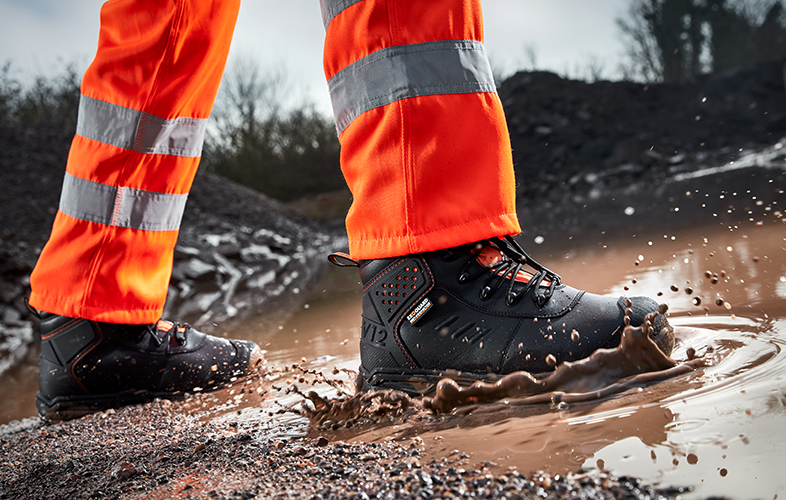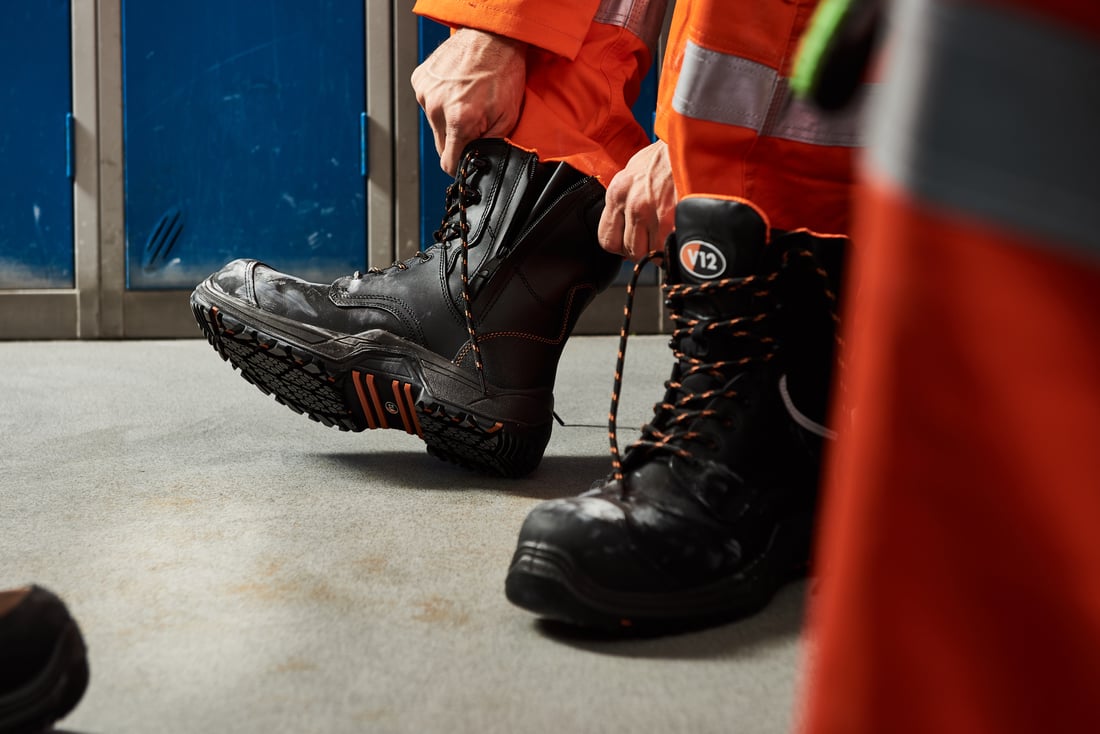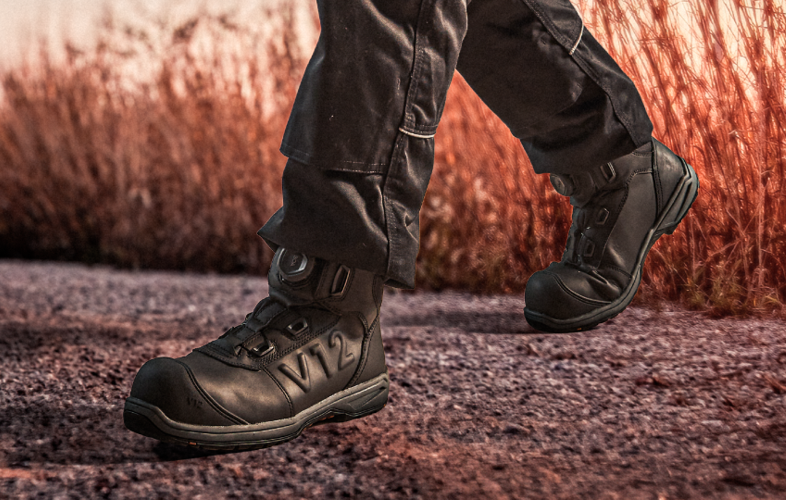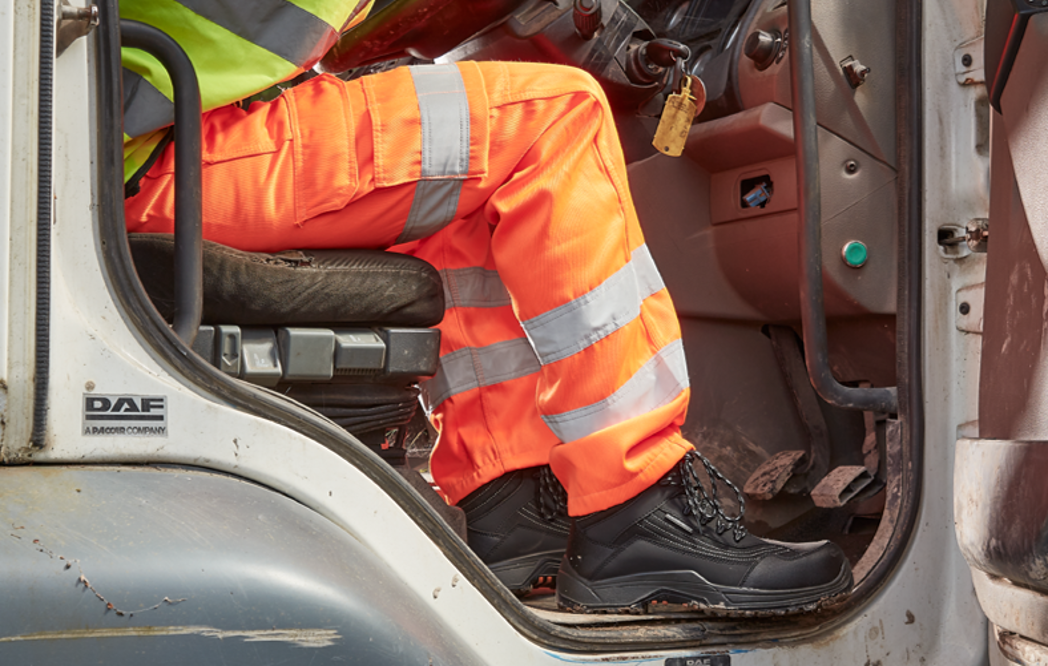Safety boots are strong and durable by nature, aren’t they? Do you really need to look after them?
The simple answer - yes.
They might be packed with protection and built to withstand all kinds of abrasion and heavy impacts, but if safety boots aren't looked after properly - just like most things - they’ll begin to degrade. And crucially, if safety footwear is damaged or compromised through neglect, they won’t provide the original and intended level of protection for your feet.
So, in this blog, we’re going to show you some really easy, quick and inexpensive ways to take care of your safety boots to keep them looking great and lengthen their life. Afterall, following some simple steps to preserve the life of your safety boot will give you some big value bonuses: you save money in the long run as it reduces the amount of times you buy new pairs, plus you’ll be doing the planet a favour by keeping your boots on your feet - and off the landfill sites for longer.
How do work boots become damaged?
Before we get to boot maintenance, let’s explore some of the common causes of safety boot damage.
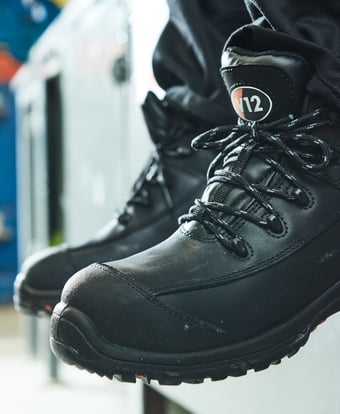
Repeated exposure to high temperatures
This situation commonly occurs when wearers make the mistake of drying wet boots using direct or high heat. (more on this later)
Incorrect specification
If a boot with no toecap or waterproofing is used in a wet environment where impact and crushing is prevalent, it will soon come a cropper – as could the feet inside them.
Improper or inadequate washing
Washing your boots is important to preserve their look and durability, but using the wrong cleaning agent and cleaning tool can damage the uppers badly.
Abuse or misuse
From pulling your boots off with the laces still tied, throwing them in the back of your boot after a shift, or simply using them as if they're indestructible by kicking objects out of the way on-site - as tough as safety boots are, mistreatment will lead to damage.
In a survey we conducted in collaboration with University of Bath in 2019 of over 500 people working in safety-critical industries, when asked how often they bought new safety shoes, over 58% said that they needed to replace them at least once every 3-12 months. And while different footwear products vary in quality, it's a fair assumption that a lot of these statistics on the short lifespan of boots are related to lack of maintenance and proper care.
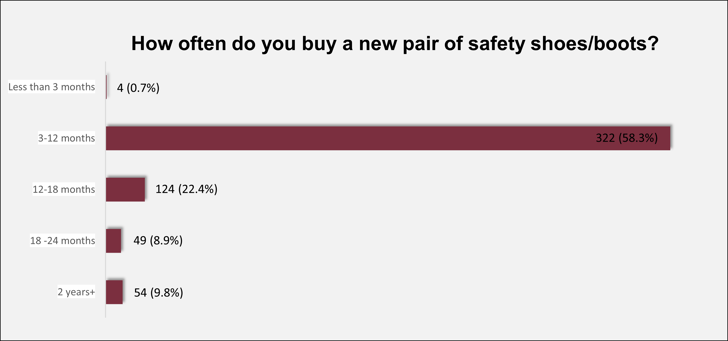
Piercing, crushing or impact
If your safety boot toecap, midsole or met guard keeps you safe by taking the brunt of an impact, then it has achieved its purpose – but it will need to be replaced after this. A flat or dented safety feature won’t be as effective second time round.
Age
It comes to us all – including safety boots. Even with durable and high-performing safety boots like V12s, wear over time will eventually mean you’ll need to get a replacement pair.
HOW TO CARE FOR YOUR BOOTS
In short, there are plenty of factors that can decrease the effectiveness and shorten the life of a safety boot. So, if you’ve just become the proud owner of a brand new pair, here’s our guide to making them last as long as possible. Afterall, your work boots are there to take care of you, but you’ve got to be ready to return the favour!
UNLACING
When taking them off and putting them on, always undo the boot's laces or fastening system. Taking off a boot that still has its laces fastened is usually achieved by pushing them off at the heel with the other foot, which can easily lead to the sole coming away from the upper. Similarly, when someone tries to put their foot into a boot which has its laces tied, this pushes down and can crack or crush the material in the two areas around the heel, known as the ‘counter’ and the ‘collar.’
CLEANING
Your boots don’t have to look pristine after each use, as chances are you’ll be walking them through some pretty mucky environments. But removing dirt, mud or contaminates from the surface of your boot is a basic and easy job that’ll really pay off in the long run. If you don’t clean your boots properly, they could get permanently stained or discoloured, and they simply won’t last as long, particularly as depending on what industry you work in, some contaminants like chemicals and manure can be highly corrosive. Use soapy water to remove the dirt, then gently towel-dry. If you're going to use a brush, use a soft bristled one so you don’t scratch the leather.
DRYING
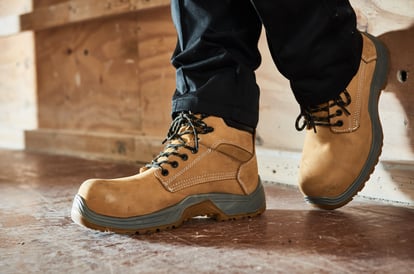
There’s a lot to consider when drying wet work boots, and getting this process wrong is a sure way to cause quick and long-lasting damage. The most important thing to remember when drying them is to avoid direct heat. Drying your wet boots by putting them next to a heater, fire or radiator is a BIG MISTAKE. Remember, leather is skin - and even after it’s processed and manufactured into boots, it still contains pores, retains natural oils and reacts badly to high heat – just like our skin does. Next to intense heat, the suppleness of your boot’s upper material will quickly disappear and become cracked and brittle. High heat can even melt the glue that holds your safety boot’s components together, so it's certainly one to avoid.
So, what is the best way to dry your wet boots? We’ve got a whole blog dedicated to all the best techniques here.
If your boots do end up cracked or damaged from direct heat, you can replenish the oils by treating it with V12’s V0011 Leather Food. This blend of natural oils and waxes nourishes and protects the leather - learn more about it here.
STORAGE
Ever got home after a long, gruelling and sweaty shift and felt like kicking your boots off and relaxing? Well, don’t do that. After you’ve taken your boots off having untied the laces, your footwear, just like you, needs a cool and well-ventilated place to rest. A well-ventilated area will air-out smelly or sweaty boots – and it should preferably be an area that doesn’t let in a huge amount of direct sunlight. Keeping your boots out of the sun will ensure they don’t fade.
aND FINALLY...
You’ve almost got all the information you need to keep your boots looking good and functioning well. But let’s finish with some common safety boot ‘no-nos’ to ensure you’re aware of the pitfalls to avoid as well as the tips for success.
Don’t:
Wash with chemicals
It’s tempting to use strong detergents or solvents to get the dirt off your footwear, but often this will do much more harm than good. Warm soapy water with a soft brush is a more than adequate solution for keeping boots clean.
Wear them out by wearing them in non-safety situations
Sounds a bit obvious, but you’d be surprised how easy it is to forget what you’re wearing on your feet and end up nipping to the shops, walking the dog or walking around the house with your work boots still on – particularly if they’re comfortable. But this additional usage can add up over time, so preserve the life of your footwear by ensuring that when you get off-site, they come off your feet. (Besides, you don’t want your slippers feeling left out do you?)
So, if you’re thinking of investing in a new pair of safety boots, with your footwear care techniques and our high-performance safety features and quality construction, your boots could end up lasting a very long time. Click below and search for the right pair for you.

